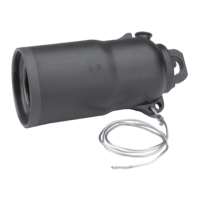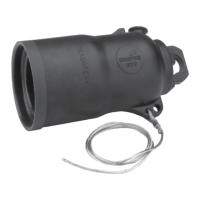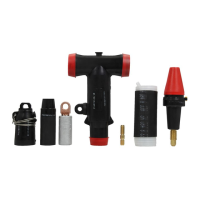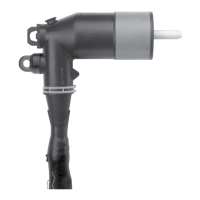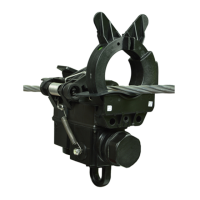Section 8: Troubleshooting
WARNING
Hazardous voltage. When troubleshooting energized
equipment, protective gear must be worn to avoid
personal contact with energized parts. Failure to comply
can cause serious injury or death. VR-T213.0
When using the CL-7 control with an Eaton's Cooper Power
series regulator, refer to document MN225008EN VR-32
Voltage Regulator with Quik-Drive Tap-Changer Installation,
Operation, and Maintenance Instructions for additional
information on the regulator operation and maintenance.
External check
Examine the power connections first. For example, verify
that the load lead is connected to the load (L) bushing, the
source lead is connected to the source (S) bushing and that
the source-load lead is connected to the source-load (SL)
bushing. Check for other potential problems, such as an
open ground connection.
Defining the problem
Determine which of the following categories best describes
the malfunction and follow the corresponding steps. Refer
to the schematics in Section 9: Appendix, Figure 62
through Figure 67, while diagnosing the problem.
ote:N Parameter options accessed via menu or function
code are shown in bold.
Settings of front panel switches are shown in bold.
Keypad directions are shown as follows: press keys
as shown in bold; enter numbers as shown in italics.
ote:N The typical control box will have a single terminal
board (TB3) at the bottom of the back panel. Legacy
control boxes, CRA control boxes and a very few
new units will have two terminal boards, TB1 at the
top and TB2 at the bottom. TB3 will include most
of the same terminals as found on TB1 and TB2.
Troubleshooting principles will apply to any back-
panel configuration.
Control panel troubleshooting
No motor power
If the control panel powers up, but the motor will not run,
first check the 6 A motor fuse on the control front panel.
Remove the fuse from the control and check for continuity
across the fuse. Spare fuses are shipped with each control
and are located in the control box.
ote:N Use only 125 V, 6 amp, fast-blow fuses of the
proper current rating. Failure to do so may cause
unnecessary fuse operation or insufficient protection
of the regulator and control.
No control power
If the control will not power up at all, check the power to
the control:
1. With a voltmeter, check the voltage between terminals
VS and G. The voltage should approximate the set
voltage. If the voltage is present at terminal VS, then
the problem is in the control. Replace the control.
2. Check the voltage-disconnect knife switch V1, V6 (if
present), and the current shorting knife switch C on the
back panel in the control enclosure. Close the V1 and
V6 switches if open. Open the CT shorting switch (C) if
closed.
3. Check the voltage between V1 and G. If the voltage
is present at V1, then the problem could be in the
wiring harness or ratio-correcting transformer. Check for
loose connections or burnt wiring. Verify that the ratio-
correcting transformer RCT1 is on the correct tap for
the regulated voltage as shown on the nameplate on
the control enclosure door.
4. If voltage is not present, then the problem is either in
the control cable, junction box connection, or inside of
the regulator.
Self-test
The control hardware performs self-diagnostic physical
and memory checks. There are two events which force the
control into the self-test routine: (1) Power is turned on; (2)
Operator entry of the self-test mode (FC 91).
The duration of this test sequence is approximately seven
(7) seconds. At completion, the display will indicate PASS
or display an error message if a problem is found. (See
Diagnostic Error Messages in the next section of this
manual). The messages will remain in the display until the
operator presses the ESC key or, after 20 minutes, the
display will automatically be turned off.
ote:N After the self-test and the LCD displays PASS, press
ESC key for further keypad use.
Diagnostic error messages
Upon running the self-test, if an error is detected, a
diagnostic error message will be displayed and the red
DIAG ERROR LED will illuminate until the self-test is rerun
without error.
ote:N The most common diagnostic errors can be rectified
by changing parameters in the control. Review this
section or call an Eaton representative for assistance.
A list of diagnostic error messages and explanations
follows.
Non-Volatile Settings Failed!—The firmware was unable
to create, open, read or write the settings file.
Frequency Detection Failed!—Detected system
frequency is below 40 Hz or above 70 Hz.
158
INSTALLATION, OPERATION, AND MAINTENANCE INSTRUCTIONS MN225003EN April 2018
CL-7 Voltage Regulator Control

